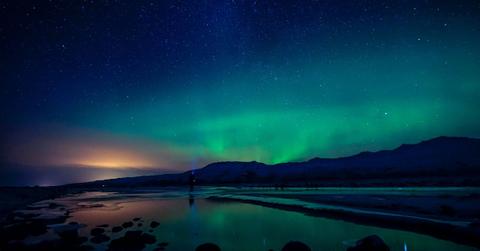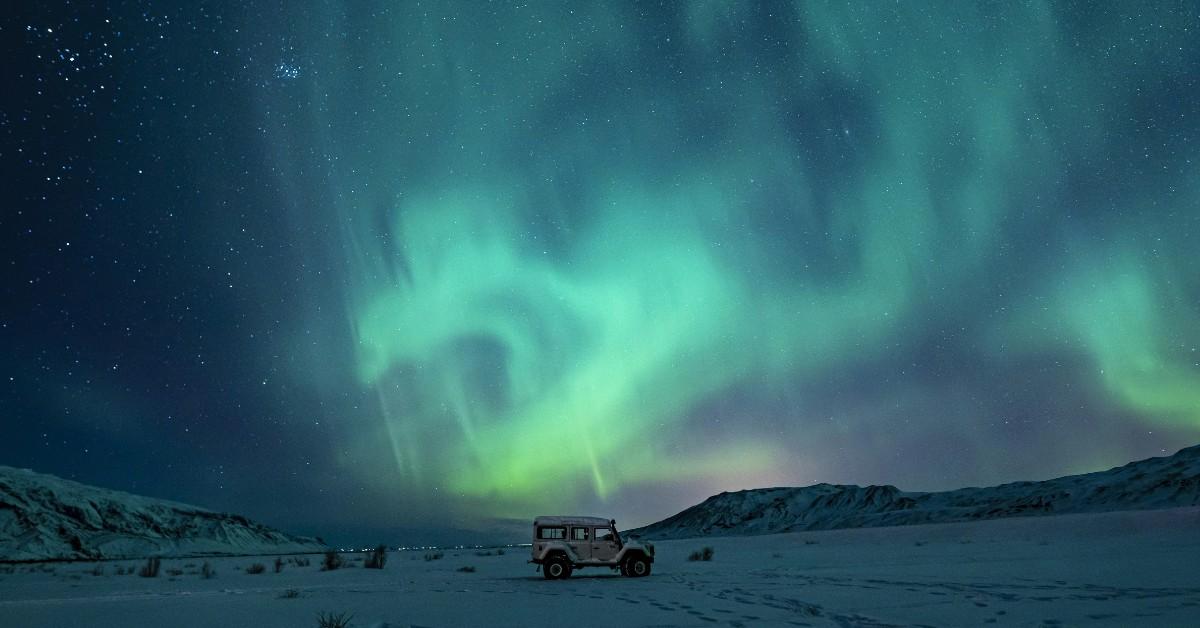Northern Lights Expected To Be Visible in 14 States Tonight
Those as far south as New York and Idaho may be in for a treat.
Published June 24 2025, 1:01 p.m. ET

Fans of celestial events are going to want to look up on Jun. 24-25, 2025, as they're expected to be in for a spectacular show. That's because a geomagnetic storm is expected to produce an aurora borealis that will be visible across 14 states. While those in Alaska will likely have the best show, space experts are predicting that some folks in the lower 48 will also be in for a real treat.
Want to know what states will have a view of the northern lights tonight? You can find out below, including why we're getting a chance to see the lights in areas that are much further South than normal.

What states will have a view of the northern lights tonight?
The big brains at Space.com say that the following 14 states should be in the path of the auroras:
- Alaska
- South Dakota
- Minnesota
- New York
- North Dakota
- Idaho
- Oregon
- Montana
- Washington
- Maine
- New Hampshire
- Michigan
- Vermont
- Wisconsin
However, the space group reminds readers that predicting auroras is pretty hard to do, and sometimes they don't show up when (or where) they are supposed to. But, for your best shot at checking out the lights, the publication says you should head to an area that doesn't have a lot of light pollution and position yourself so that you're facing North.
When it comes to the best time of day to catch the show, night owls are in luck.
That's because the lights are typically best viewed around 1 a.m. local time during the summer months. But note, this time changes during the other seasons, so don't assume that you'll always get the best view at this time of day.

Why will we be able to see the northern lights tonight?
Those located in the areas where the lights are supposed to be visible can thank the strong stream of solar wind. Space.com says that the wind is coming our way thanks to a coronal hole on the sun's surface, which is forecasted to create a G1 to G2 level solar storm. These storms are considered minor to moderate, as far as solar storms go, and NOAA's Space Weather Prediction Center (SWPC) expects the Kp index to peak at 5.67.
In addition to the light show, geomagnetic storms can produce other events. Depending on the strength of the storm and the coronal mass ejections (CMEs) that produced them, they may create disruptions in navigation systems, according to the SWPC.
Additionally, they can create problems for satellites that are orbiting closely to Earth, change the path radio signals travel, and alter the information obtained from Global Positioning Systems (GPS).
Very strong storms can even cause power outages. That's exactly what authorities say caused 1.4 million Puerto Ricans to lose power in April, when a large geomagnetic storms was blamed for knocking power out across the island.
The Daily Mail says that the system was already vulnerable when the geomagnetic storm, which occurred at the same time as the power outage.
While there's no way to prove that the storm was the cause of the power outage, it seems like most experts are blaming it for the prolonged period of darkness.
However, tonight's storm shouldn't be anywhere near as strong as the April one, so hopefully people located in the 14 states listed above will just be treated to an epic light show, and nothing more.